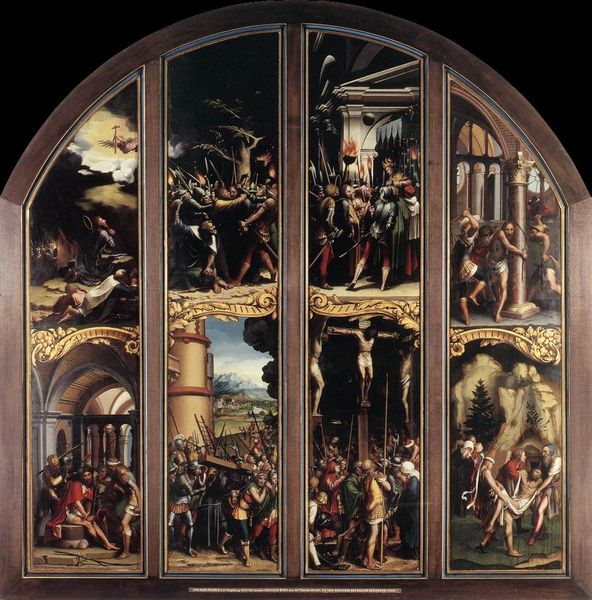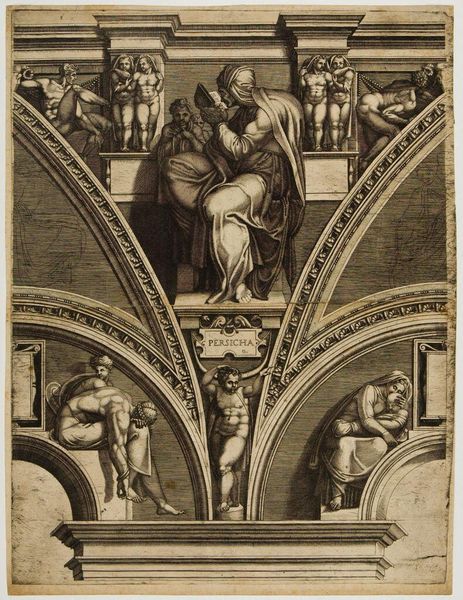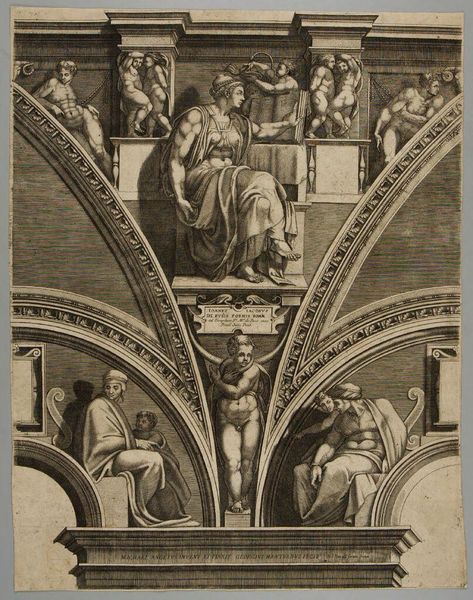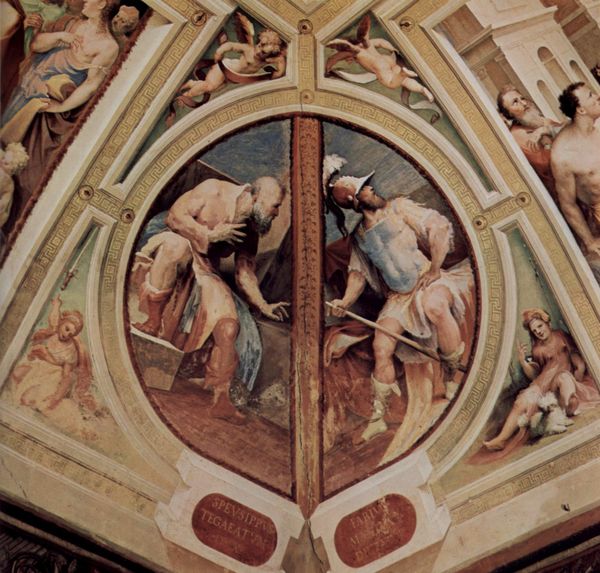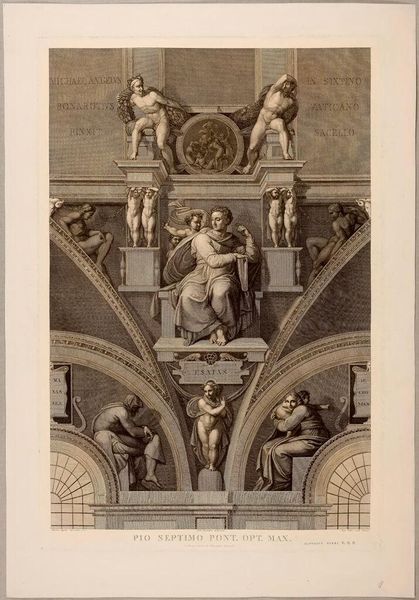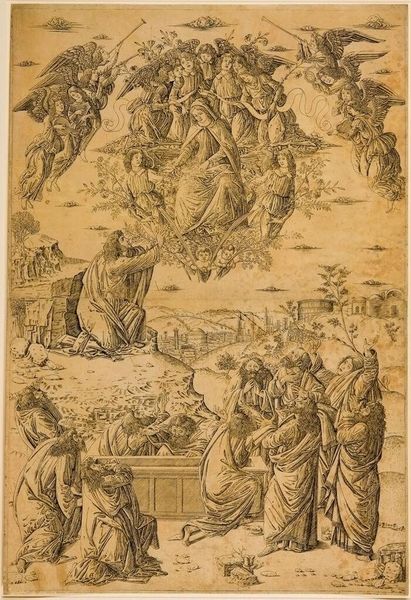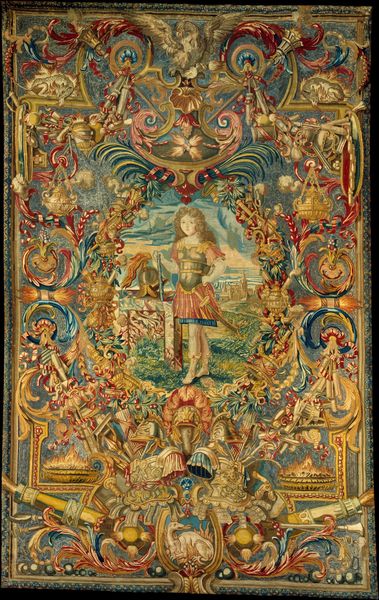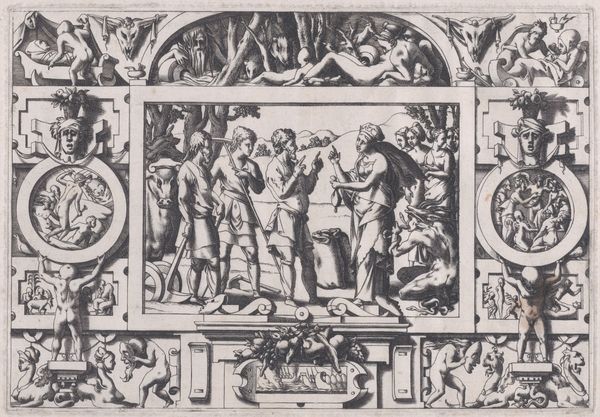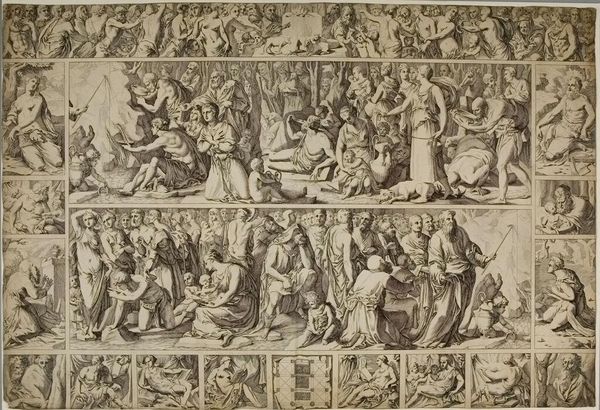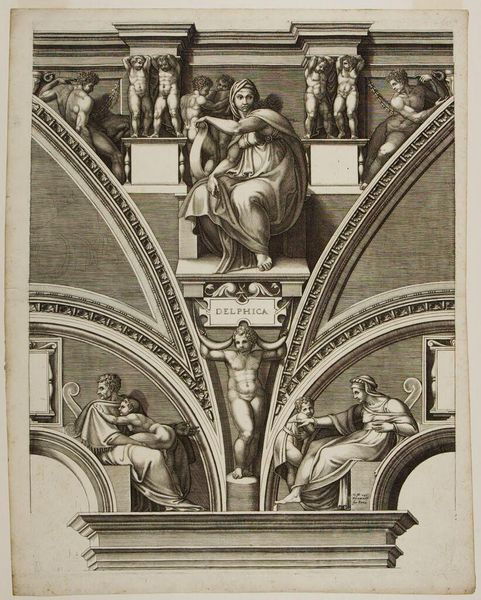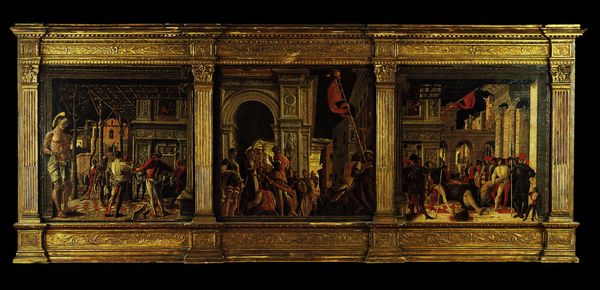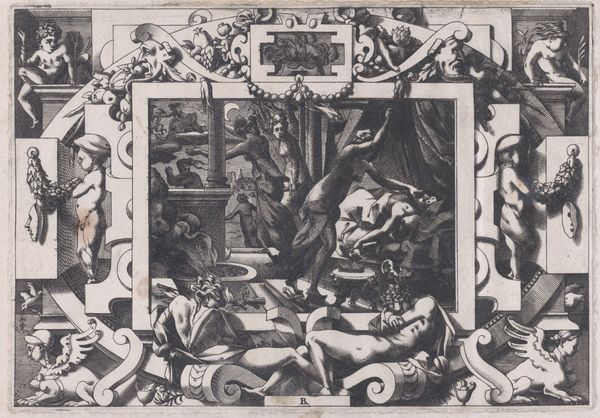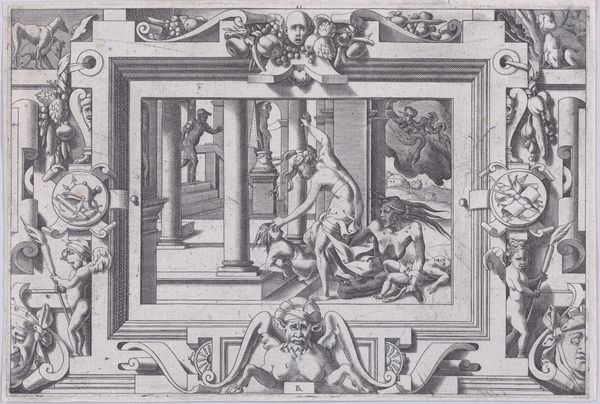
Annunciation to the Shepherds, and Augustus and the Sibyl 1546
0:00
0:00
mixed-media, tempera, painting
#
mixed-media
#
narrative-art
#
tempera
#
painting
#
sculpture
#
perspective
#
figuration
#
handmade artwork painting
#
oil painting
#
history-painting
#
italian-renaissance
#
mixed media
#
watercolor
Copyright: Public domain
Editor: We're looking at Giulio Clovio’s "Annunciation to the Shepherds, and Augustus and the Sibyl," made around 1546. It's a mixed-media work that's bursting with figures, almost overwhelmingly so. All these bodies arranged on what appear to be two decorative door panels create a rather ornate impression. What do you see as significant here? Curator: The juxtaposition of scenes is key. Clovio sets a classical scene – Augustus consulting the Sibyl – alongside the Christian annunciation to the shepherds. This pairing was common in Renaissance thought, connecting classical and Christian worlds. How do you see this relationship playing out in the imagery? Editor: Well, both scenes involve divine communication, but one is tied to the Roman Empire and the other to the birth of Christ. The Roman scene is a bit more...organized, maybe? Curator: Exactly. Consider how the Renaissance, particularly in the 16th century, understood itself as inheriting both traditions. This work is interesting, viewed in the historical context of papal patronage. Clovio was working in a cultural environment where melding classical prestige with Christian narratives served very specific political and cultural purposes. The elite and powerful audiences wanted to see that seamless connection. Do you feel it successfully represents this melding? Editor: I see the effort, and how the art's location, on what is considered a lavish and ornamented “door”, connects the piece with power and a place of nobility, it makes sense, although it feels more like these ideas have been crammed in next to each other, rather than truly woven together into one thing. Curator: I think your reading is insightful. While outwardly harmonious, the work does reveal some of the tensions inherent in that attempted fusion, reminding us how the display and function of art often carried significant weight within particular social structures. I learned so much about this time period in our discussion of this piece. Thank you! Editor: Me too, especially considering how those connections impacted what artists were making. That’s a useful thing to remember going forward.
Comments
No comments
Be the first to comment and join the conversation on the ultimate creative platform.
